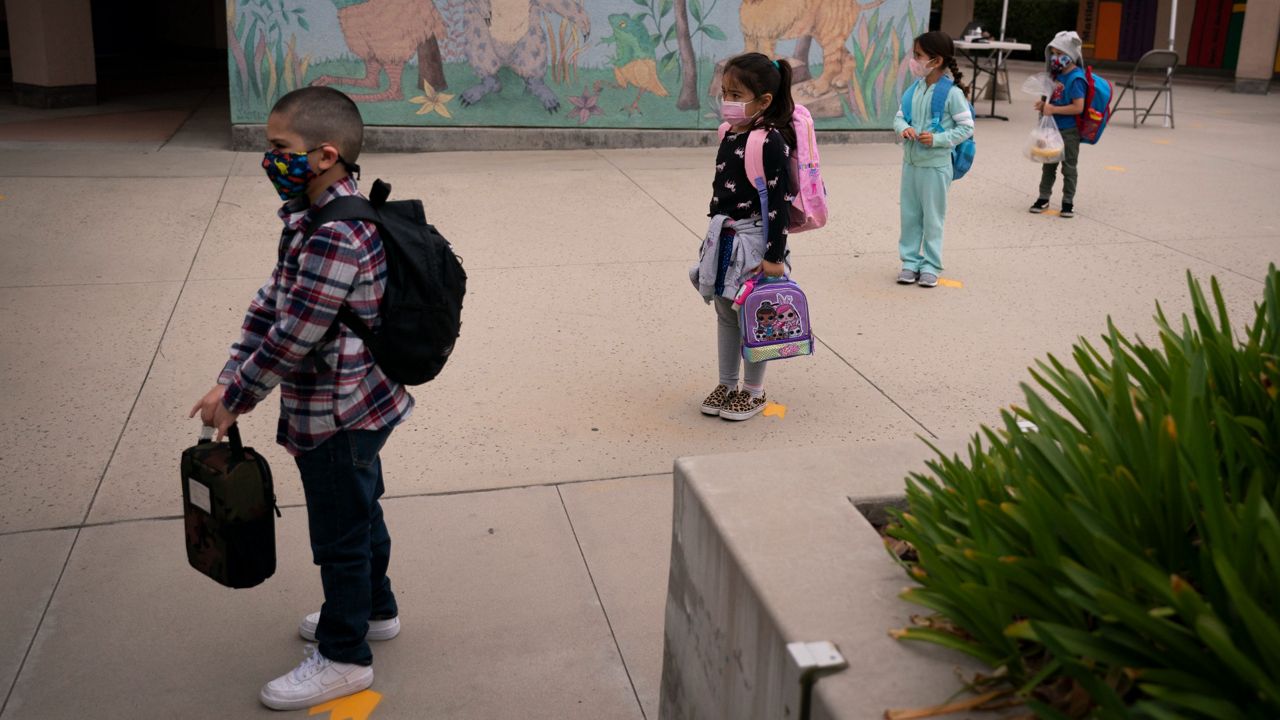Health officials sounded the alarm Thursday about a 2-percentage-point drop in routine vaccination rates for children entering elementary school.
What You Need To Know
- A study by the Centers for Disease Control and Prevention, published Thursday, found that vaccination rates for kindergarteners for measles, mumps, polio, chickenpox and other diseases fell from 95% in the 2019-20 school year to 93% in 2021-22
- That difference translates into at least 250,000 children not being protected, officials said
- Health experts blamed the COVID-19 pandemic for the lower vaccination rates
- A separate CDC study published Thursday on vaccination rates of children during their first 24 months of life did not find a decrease, but it did find lower rates for children living in poverty or in rural areas, as well as among uninsured children
A study by the Centers for Disease Control and Prevention, published Thursday, found that vaccination rates for kindergarteners for measles, mumps, polio, chickenpox and other diseases fell from 95% in the 2019-20 school year to 93% in 2021-22.
That difference translates into at least 250,000 children not being protected, officials said. It also leaves communities more susceptible to outbreaks, said Dr. Sean O’Leary, chair of the American Academy of Pediatrics’ Committee on Infectious Diseases.
“As public health advocates, we know it benefits all of us when every child in our community is vaccinated,” O’Leary said in a call with reporters Thursday. “Not only does it mean all of the children in our community are protected, but it also means all of us are more likely to be healthy. … High immunization rates help everyone to be healthier.”
The report, based on data from state and local immunization programs, comes as the United States has seen the return of diseases once eradicated or nearly eliminated, including a case of paralytic polio last year in New York and measles outbreaks in Minnesota and Ohio.
Health experts blamed the COVID-19 pandemic for the lower vaccination rates. They said the pandemic resulted in fewer parents taking their children to doctors for checkups, schools relaxing immunization policies and misinformation about COVID-19 shots possibly hurting confidence in other vaccines.
There also has been some complacency.
“For many parents today, the diseases we vaccinate children for are theoretical,” O’Leary said. “They haven’t seen them because vaccinating worked so well for decades.”
A separate CDC study published Thursday on vaccination rates of children during their first 24 months of life did not find a decrease, but it did find lower rates of a combined seven-vaccine series, by 4 to 5 percentage points, for children living in poverty or in rural areas, as well as among uninsured children, which was eight times lower than with insured kids.
The study is based on National Immunization Survey responses about children born in 2018 and 2019.
The CDC recommends children be vaccinated against 14 diseases by the time they turn 2.
The CDC said it’s working to increase child vaccination rates. This week, it launched an initiative called Let’s RISE — an acronym for Routine Immunizations on Schedule for Everyone — that includes education materials aimed at helping families with questions about vaccinations and helping doctors talk with families about the shots.
Dr. Georgina Peacock, director of the CDC’s immunization division, also called on state and local health departments to reduce barriers to shots and work to improve vaccine confidence.
To address inequity, the CDC’s Vaccines for Children program covers the cost of all recommended vaccines for eligible children, but the program needs enough provides to offer it and for families to be aware of it, the agency said.
O’Leary encouraged families with questions about vaccinations to call their pediatrician or health provider or visit HealthChildren.org for information.
“Personally as a pediatrician specializing in infectious diseases, I take care of a lot of hospitalized children,” he said. “Believe me, as much as we try to make the experience as painless as possible, it’s never fun to have your child in the hospital.
“Many of these hospitalizations can be prevented by the simple, safe step of getting your child up to date on their vaccinations,” he added.



